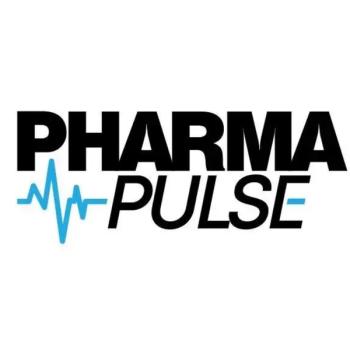
- Pharmaceutical Commerce - March/April 2015
ACOs raise the stakes for evidence-based medicine
Manufacturers will need to refine their interactions with healthcare providers and produce better outcomes research and adherence programs to compete
There is no doubt that the term Accountable Care Organization (ACO) has become one of the most talked about terms within the healthcare industry since Elliott Fisher, Director of The Dartmouth Institute for Health Policy and Clinical Practice, first coined the phrase in 2006. Leavitt Partners defines an ACO as a legal entity consisting of a group of health care providers that agree to oversee the provision of health care services to a defined population with responsibility to reach certain quality benchmarks and some financial responsibility for the total cost of care for the population. [1] In practice, ACOs have evolved beyond distinct legal entities to now represent the broader behavioral change among providers and payers in the delivery and financing of care.
ACOs By State
Fig. 1. Count of ACOs by state.
The Centers for Medicare & Medicaid Services (CMS) Innovation Center initially accelerated awareness for ACOs with pharmaceutical companies recently becoming aware of their growth and relevancy. CMS’ willingness to be a first-mover provided the impetus for private-sector payer and provider organizations to explore new mechanisms beyond the initial ACO framework to accelerate the shift away from fee-for-service reimbursement and incentivize increased quality while containing costs. The resulting ACO-landscape counts a current total of 626 distinct ACO entities, of which 329 have government contracts, 210 have commercial contracts, and 74 have both. [2] Texas, California and Florida have the most entities; Alabama, West Virginia and South Dakota have none (Fig 1, reference [3]). Collectively, these ACOs now represent 20 million lives and most observers expect this number to only increase in the years to come.
As ACOs continue to evolve, with pharmacy management increasingly becoming a core element of both clinical and financial performance, manufacturers are evolving their engagement models by:
- Reconsidering the increased influence these entities and their sponsors have on Rx access and selection both within, and outside of, specific ACOs.
- More deeply understanding the nuances of organizational structure and downstream behavior by distinct audiences.
- Exploring various sales structures to optimally engage key stakeholders who address a broad and ever-changing set of priorities.
Better understanding today’s ACO customers
How ACOs have historically contracted with payers has always been among the most important organizational characteristics, with three primary models serving as points of distinction:
- Medicare Shared Savings Program (MSSP): Implemented by the Patient Protection and Affordable Care Act (ACA), the MSSP allows affiliated ACOs to receive shared savings for improving quality of care and reducing costs across a specific Medicare patient population.
- Pioneer ACO Model: This model requires ACOs to contract with CMS and other payers (i.e. commercial payers, employer health plans, and/or Medicaid state agencies). This program has been most successfully embraced by ACOs who are experienced in coordinating system-wide care and want to assume greater financial risk.
- Commercial ACOs: Although ACA mandates have sparked Medicare ACO development, commercial payers have been accelerating the trend by forming private-sector, non-MSSP-affiliated ACOs. These ACOs are not constrained by CMS’ requirements and can vary greatly in the risk-sharing arrangements.
In September 2014, CMS released the quality and financial results of the MSSP ACOs with 2012 start dates for the first performance year. About 26 percent of the organizations decreased spending enough to receive bonus payments. The 53 ACOs that received bonuses earned more than $300 million as their share of program savings, with Houston-based Memorial Hermann ACO and Palm Springs (Fla.) ACO earning the largest bonuses, receiving $28.34 million and $19.34 million respectfully. [4]
While understanding how ACOs specifically contract with payers is an important characteristic, some are now further including the distinction of whether the ACO is physician- or hospital-led to better inform their understanding. Ownership composition is viewed as a valuable proxy into the root drivers of both decision making and the way in which clinical and financial leadership assigns value. The two core ownership types are:
- Physician-led: ACOs led by groups of physicians who band together to supplement existing hospital contracts or affiliations. These ACOs manage fewer patients in aggregate than their hospital-led peers but are larger in sheer numbers. C-suite leadership is drawn from both primary care physicians and specialists, with local geography and demographics impacting ACO size and composition.
- Hospital-led: Consist of health systems who either directly employ their physicians or who contract with providers to ensure optimized patient management and flow within existing facilities. These ACOs provide care in both in-patient and out-patient settings and across the entire spectrum of acute and chronic disease. The legal entity is able to enter into multiple arrangements with local and national payers and directs resources across the full care continuum.
A key difference between physician-led ACOs compared with other ACOs, such as those organized by hospitals, is that physician-led ACOs have clearer financial benefits from reducing health care costs outside the physician group, which are much larger than physician costs. In contrast, hospital-based ACOs also receive shared savings for avoiding hospitalizations or shifting care to a less costly ambulatory setting, but those cost reductions are lost revenue for the hospital. The interests and incentives of physicians in physician-led ACOs are not similarly conflicted, and the benefits are more concentrated. -Mark McClellan, MD, PhD, a senior fellow at the Brookings Institution [6]
Manufacturers should assume wide variation in ACO capabilities and willingness to collaborate across these two ownership structures. Many physician-led ACOs remain relatively small in size and have just begun to function as a unified entity in support of population health initiatives. Hospital-led ACOs often have the benefit of existing scale and experience with access to the capital required for IT and HR investments to optimize performance. Engagement strategies should reflect these operational realities and be grounded in a deep understanding of who your audience truly is. Only after you are able to accurately define and characterize your audience will you be able to identify what objectives and influencers drive their decision making.
Fig. 2. ACO quality metrics by disease (ref 7).
Examining behaviors across audience types and disease states
Most physician-led ACOs acknowledge that their focus continues to be on “low hanging fruit,” where their impact can reach the broadest number of patients. Specific therapeutic categories include: diabetes, cardiovascular disease and vaccinations. It is not surprising that these are the same areas where consensus quality measures exist from CMS and trusted third-parties such as the National Quality Forum (NQF) and National Committee for Quality Assurance (NCQA) to monitor and assess improved outcomes. A patient with diabetes who sees a physician in an ACO may work with the physician to control blood sugar and other symptoms of the disease. The physician may monitor and offer changes to medication, diet, or exercise routines and leverage care extenders such as nurses and care coordinators. In doing so, the ACO not only achieves the metrics against disease management, but also prevents the patient from requiring a hospital visit. For some physicians, this may have additional payoff in that ACO contracts offer incentives for reducing hospital admissions.
Hospital-led ACOs also strive for the same quality outcomes, but are able to provide a different type of patient care due to their diverse capabilities and infrastructure. Unlike the diabetes and chronic care example, hospital-led ACOs may be able to engage payer partners with more sophisticated episodic or bundled payments for acute care. For example, when a patient who is a member of a hospital-led ACO requires a liver transplant, it is likely that the payers will have already charted how much the procedure should cost, how long rehabilitation should take, and what should be the total cost for medication. In this episodic payment model, the ACO is provided a predetermined amount of money and is held accountable for quality outcomes and incentivized to contain the costs. In the event the patient needs to be readmitted shortly after surgery, the payer will not provide additional reimbursement to cover the patient’s additional needs. This payment trend is forcing health systems to look at treatment plans holistically and become more cost efficient and mindful of delivering quality outcomes. [8]
ACOs will likely cause a shift in care from acute care facilities to community oriented primary care to reduce cost. This will cause greater emphasis on ambulatory pharmacy care including chronic disease management and preventative disease strategies. From a pharmaceutical commerce perspective, the biggest impact will be on methodologies to ensure adherence and accuracy in the ambulatory setting. There will be many new technologies and modalities to improve in these two areas. Payers will likely begin to fund successful strategies that show tangible improvements in terms of clinical outcomes and/or reduced costs. Health systems are definitely shifting resources to the ambulatory side and ACO models can be viewed as contractual relationships that facilitate global infrastructure for the delivery of care across multiple settings and distribution of the revenue derived from that care in proportionate amounts.
Tailoring your product’s value proposition to reflect contemporary realities
It’s essential that manufacturers define product value propositions to reflect the unique needs of distinct audiences throughout the entire continuum of care. Medication with FDA approval is merely the cost of entry and manufacturers may find greater success if they can identify ways the medication will enhance quality outcomes and provide economic or outcomes-based data that supports an organization’s goals.
Outcomes-based data that may support an ACO’s goals include: clinical evidence that the manufacturer’s therapy reduces comorbidities, prevents hospital admissions and readmissions, shortens lengths of stay, requires a lower number of physician administrations or drives improved adherence relative to competitive products via factors such as reduced dosage frequency, fewer side effects and overall ease of use for patients. Demonstrating a lower total annual cost of care for a patient population receiving one medical intervention versus another may carry more weight when compared to the siloed mentality that can exist between distinct outpatient and inpatient services.
In order to keep value propositions relevant to ACOs, manufacturers should stay current on payer trends, including market research, to identify leading indicators of behavior and gain visibility into market changes that could affect product access and utilization. Tailor opportunities for knowledge transfer to reflect the reality that ACO constituents often report they are “over whelmed and under resourced.” Provide solutions which are easy to implement and come with built-in ROI metrics which align to the way in which ACOs are already being measured.
While ACOs continue to be a popular topic in healthcare, it’s important for manufacturers to understand that they should be thoughtful in including these entities in commercialization activities. They should spend time understanding how these organizations are structured in order to anticipate how audiences may behave. This behavior is going to focus on delivering quality outcomes, so manufacturers need to adopt an outcomes-based mindset as well in order to ensure credibility for their personnel and relevancy for their data.
Increased understanding for the drivers and incentives for key stakeholders will help manufacturers to define the value proposition and optimize promotional investments. Most ACOs, whether physician or hospital led, have only recently begun to meaningfully engage in optimized Rx management. The time is therefore ideal for manufacturers to capitalize on this engagement and provide ACO stakeholders with the information and resources they need to accomplish their stated missions. Those who do will be rewarded with a commitment to true partnership across all parties within the ACO, which has not been seen in our industry in many years.
References
- What, really, is an ACO? Leavitt Partners website. http://leavittpartners.com/2013/10/really-aco/#sthash.graSncRr.dpuf
- Peterson, M., Gardner, P., Tu, T., Muhlstein, D. Growth and Dispersion of Accountable Care Organizations: June 2014 Update. Leavitt Partners. http://leavittpartners.com/wp-content/uploads/2014/06/Growth-and-Dispersion-of-Accountable-Care-Organizations-June2014.pdf
- Health Affairs.
- Ellison, A. A year of Mixed Results, Continued Growth for ACOs. Becker’s Hospital Review: November 2014. http://www.beckershospitalreview.com/accountable-care-organizations/a-year-of-mixed-results-continued-growth-for-acos.html
- Leavitt Partners.
- Farzad Mostashari, MD, MPH1; Darshak Sanghavi, MD1; Mark McClellan, MD, PhD1. Health Reform and Physician-Led Accountable Care. JAMA: May 2014. http://jama.jamanetwork.com/article.aspx?articleid=1861359#jvp140051r5
- Quality of Care: Models & Metrics. HIRC website: http://www.hirc.com/system/files/public/ACOs_14.pdf
- Wokasch, M. How Accountable Care Organizations (ACOs) Will Affect Pharmaceutical Sales Representatives. Pharma Reform website. http://www.pharmareform.com/2010/10/19/how-accountable-care-organizations-acos-will-affect-pharmaceutical-sales-representatives/?wpmp_tp=0
Articles in this issue
almost 11 years ago
Politics and drugsalmost 11 years ago
A conversation with W. Scott Evangelista, Quintilesalmost 11 years ago
Manufacturers: Get ready for global trade account managementalmost 11 years ago
Partnering to diversify yields rapid growthalmost 11 years ago
Campbell Alliance updates, expands its commercial launch consulting servicesalmost 11 years ago
HealthPrize touts its success with 'gamification' in adherence programsalmost 11 years ago
Exostar grows its network of collaborative tools in life sciencesalmost 11 years ago
Rite Aid to buy EnvisionRx, continuing a reshaping of US drug distributionNewsletter
Stay ahead in the life sciences industry with Pharmaceutical Commerce, the latest news, trends, and strategies in drug distribution, commercialization, and market access.




